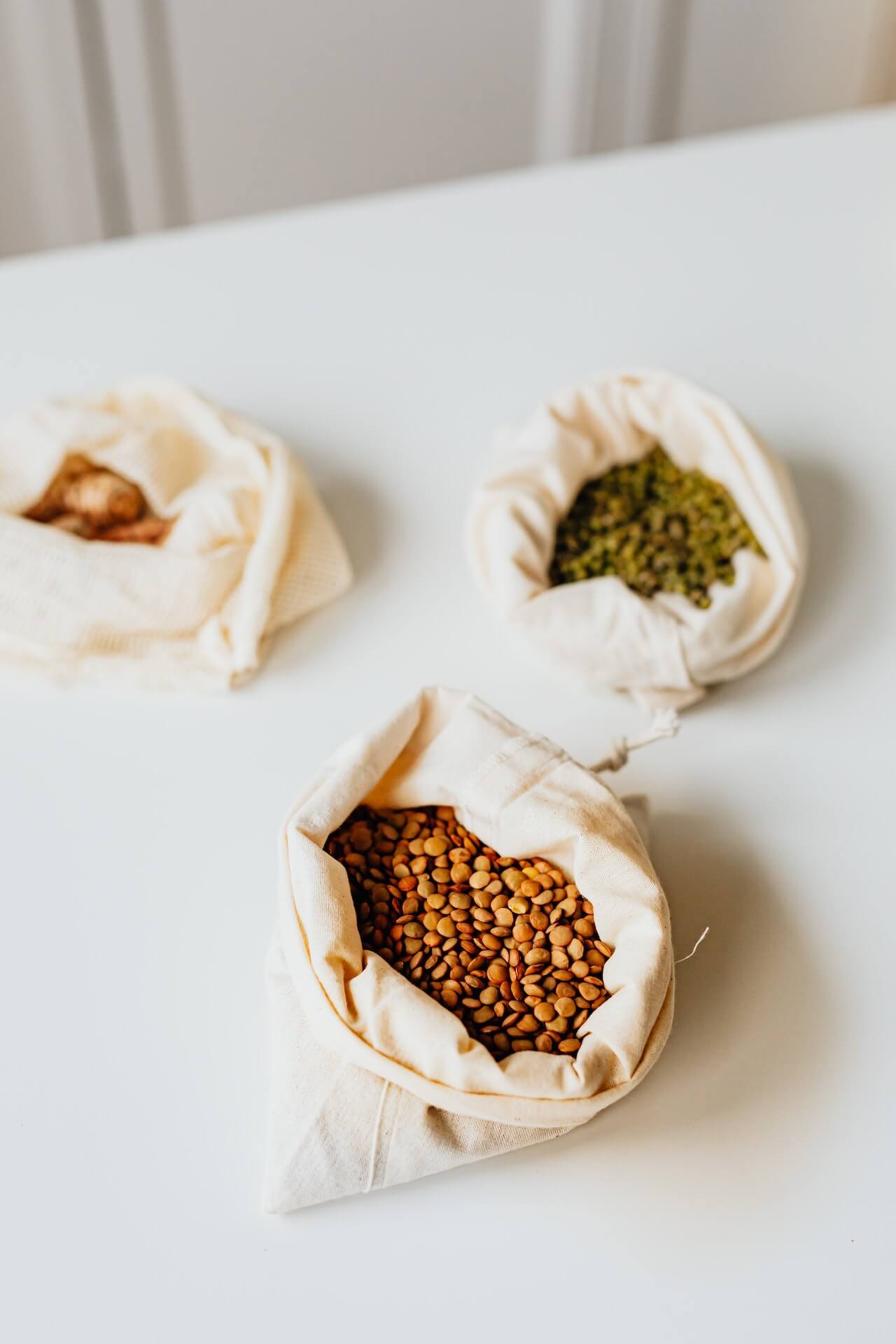Lentils are a nutritious and versatile legume used in many different dishes. There are different types of lentils, including green, brown, and red varieties. Lentils are an excellent source of plant-based protein, fiber, and essential vitamins and minerals. Lentils also have a low glycemic index (GI).
The low GI of lentils can help regulate blood sugar levels and keep energy levels stable throughout the day. This article will discuss the glycemic index of lentils, how they affect blood sugar, and the benefits of eating lentils. Whether you’re following a vegetarian or vegan diet or just looking to add more plant-based foods to your meals, lentils are a versatile and affordable option for doing so.
Types of Lentils
There are many different kinds of lentils to choose from, each with a unique flavor and texture. The nutrition each type provides may vary slightly, but they’re all pretty similar. Here are some of the most common types of lentils:
Green lentils
Green lentils are the most widely available. They have a mild, earthy flavor and hold their shape well when cooked, making them a great choice for salads and stews.
Red lentils
Red lentils have a slightly sweet, nutty flavor and cook down to a soft, creamy texture. They are commonly used in Indian and Middle Eastern cuisine for dishes like dhal and soups.
French lentils
French lentils may sometimes be called Puy lentils. These small, dark green lentils have a nutty flavor and hold their shape well when cooked. They are often used in salads and side dishes.
Brown lentils
Brown lentils share a similar taste and texture with green lentils, but they are slightly smaller and don’t take as long to cook. They are often used as a meat substitute in soups, stews, and vegetarian dishes.
All types of lentils offer several health benefits and make a delicious, high-protein, high-fiber addition to any diet.
{{mid-cta}}
Glycemic Index and Load of Lentils
The glycemic index (GI) tells you how quickly food raises blood sugar levels. The glycemic load (GL), on the other hand, considers both the GI and the number of carbohydrates in a serving of food. Low GI foods help manage blood glucose levels, especially when combined with high GI foods.
Lentils have a low GI and a low GL, so they are digested slowly, and the body’s glycemic response is minimal. This means that lentils do not cause a rapid spike in blood glucose levels.
The GI of a serving size of lentils ranges from 18 to 36, depending on the type of lentil and how it is prepared. Boiled red lentils often have a lower GI, while canned green lentils have a higher GI. Lentils have a low GL of 5. This makes lentils a great choice for those looking to regulate their blood sugar levels and maintain a healthy weight.1,2,3
Other low-glycemic legumes include chickpeas, kidney beans, black beans, and peas.
How Many Carbs Do Lentils Contain?
Lentils are an excellent source of complex carbs. Complex carbs are more slowly digested and give you long-lasting energy. The number of carbs in lentils can differ depending on the type of lentil and preparation method. One cup of cooked lentils contains an average of about 40 grams of carbs, 16 of which are from fiber. Fiber is important for supporting digestive health, promoting healthy cholesterol levels, and managing blood sugar.

Do Lentils Support Weight Loss?
Lentils are a great food to include in your diet if you are trying to lose weight.
Lentils are an excellent source of plant-based protein, with around 18 grams per cup of cooked lentils. Protein helps support weight loss because it makes you feel more full and satisfied, which might help decrease overall caloric intake. Lentils also help to manage blood sugar and keep energy levels stable, which can reduce sugar cravings.
Lentils also contain health-promoting fiber, vitamins, and minerals, including folate, iron, and potassium. Fiber promotes healthy digestion, cardiovascular health, and makes you feel more full.
Several studies have also shown that including lentils can support weight loss. Eating lentils as part of a high-protein, low-glycemic diet is associated with better blood sugar control and weight loss. Additionally, eating a high-protein diet with lentils was more effective for weight loss than a low-protein diet.4,5
Lentils are also a good source of many nutrients, including protein, fiber, vitamins, and minerals. Their low glycemic index makes them an excellent choice for managing blood sugar levels and decreasing cravings.
4 Other Amazing Benefits of Lentils (Besides Weight Loss)
Better cardiovascular health
Lentils provide important nutrients that support heart health, including fiber, folate, and potassium. Research has shown that consuming lentils can help to reduce blood pressure, improve cholesterol levels, and decrease the risk of heart disease.6,7
Healthy digestive system
Although you can take fiber supplements to support a healthy digestive system, it’s good to eat healthy foods high in fiber. The fiber in lentils promotes regular bowel movements and can help prevent constipation. Lentils also have resistant starch, which can act as a prebiotic to promote a healthy gut microbiome.8,9
Increased energy levels
Lentils are a good source of complex carbohydrates, which are digested slowly and provide a long-lasting source of energy. Lentils also provide iron and other nutrients that are important for energy production and can help to prevent fatigue.10
Supports healthy aging
Lentils are a good source of antioxidants and polyphenols, which support healthy aging. Antioxidants are substances that cells from damage caused by free radicals. Free radicals are unstable molecules that can cause cellular damage and have been linked to the development of chronic diseases, including cancer, heart disease, and Alzheimer's disease.
Research has also shown that eating legumes like lentils can help to reduce the risk of chronic diseases associated with aging, including diabetes and heart disease.11,12
How to Prepare Lentils at Home
Lentils can be added to many different dishes and recipes. Here are some healthy low-glycemic recipe ideas to inspire you:
Lentil soup
Lentil soup is a delicious vegetarian meal that is hearty, healthy, and can easily be made at home. Sauté onions, garlic, and carrots in olive oil. Add lentils and vegetable broth, and simmer until the lentils are cooked. You can also customize the soup by adding other vegetables and spices.
Lentil salad
Adding lentils to a salad is a great way to add protein and fiber, which makes the salad more filling. Cook lentils until tender and mix with chopped vegetables, such as cucumber, bell peppers, and tomatoes. Dress the salad with a vinaigrette made from olive oil, lemon juice, and herbs.
Chili with lentils
Lentils can be a great substitute for ground beef in a chili recipe. Simply cook the lentils until tender, and add them to a pot with diced tomatoes, kidney beans, and chili seasoning. Simmer until the flavors are blended, and serve with your favorite toppings. Maybe shredded cheese, sour cream, or chopped cilantro.
Lentil burgers
Lentil burgers are a delicious way to make a plant-based burger. Combine cooked lentils with bread crumbs, egg, and spices, and form into patties. Cook the patties on a grill or stovetop until browned, and serve on a bun with your favorite toppings.
Dhal

Dhal is a popular Indian dish made with lentils, spices, and tomatoes. Sauté onions, garlic, and ginger in oil. Add spices (cumin, coriander, and turmeric), and then add lentils and water. Simmer until the lentils are cooked, and then add diced tomatoes and cilantro. Serve with rice or naan bread.
Lentils can also be used in stews, curries, and casseroles.
Learn How to Improve Your Nutrition and Manage Your Blood Sugar Levels with Signos
Signos is a great resource for expert advice on nutrition and healthy eating. Signos has a team of registered dietitians who compile evidence-based nutrition information to help you improve your health and wellness. Check out the resources here.
Signos CGM empowers you to improve your health by keeping track of your diet, exercise, sleep habits, and blood sugar. Knowledge is power, and a CGM can give you specific information about how your habits affect your health.
Find out if Signos is a good fit for you by taking a quick quiz.
- Item 1
- Item 2
- item 3
Topics discussed in this article:
References
- Jenkins DJ, Kendall CW, Augustin LS, et al. Effect of Legumes as Part of a Low Glycemic Index Diet on Glycemic Control and Cardiovascular Risk Factors in Type 2 Diabetes Mellitus: A Randomized Controlled Trial. Arch Intern Med. 2012;172(21):1653–1660. doi:10.1001/archinternmed.2012.4418.
- Thompson SV, Winham DM, Hutchins AM. Bean and rice meals reduce postprandial glycemic response in adults with type 2 diabetes: a cross-over study. Nutr J. 2012;11:23. Published 2012 Apr 30. doi:10.1186/1475-2891-11-23.
- Zamani A, Taheri F, Faghih S, Keshavarz SA. The glycemic index of lentils and their effect on blood glucose levels and insulin resistance: a review. Journal of Diabetes & Metabolic Disorders. 2021;20(1):271-279. doi: 10.1007/s40200-020-00667-5.
- Kim SJ, de Souza RJ, Choo VL, et al. Effects of dietary pulse consumption on body weight: a systematic review and meta-analysis of randomized controlled trials. Am J Clin Nutr. 2016;103(5):1213-1223. doi:10.3945/ajcn.115.124677.
- Li SS, Kendall CW, de Souza RJ, et al. Dietary pulses, satiety and food intake: a systematic review and meta-analysis of acute feeding trials. Obesity (Silver Spring). 2014;22(8):1773-1780. doi:10.1002/oby.20782.
- Bazzano LA, He J, Ogden LG, et al. Legume consumption and risk of coronary heart disease in US men and women: NHANES I Epidemiologic Follow-up Study. Arch Intern Med. 2001;161(21):2573-2578. doi:10.1001/archinte.161.21.2573
- Anderson JW, Major AW. Pulses and lipaemia, short- and long-term effect: potential in the prevention of cardiovascular disease. Br J Nutr. 2002;88 Suppl 3:S263-S271. doi:10.1079/bjn2002711
- Tosh SM. Review of human studies investigating the post-prandial blood-glucose lowering ability of oat and barley food products. Eur J Clin Nutr. 2013;67(4):310-317. doi:10.1038/ejcn.2013.12
- Nilsson AC, Östman EM, Holst JJ, Björck IM. Including indigestible carbohydrates in the evening meal of healthy subjects improves glucose tolerance, lowers inflammatory markers, and increases satiety after a subsequent standardized breakfast. J Nutr. 2008;138(4):732-739. doi:10.1093/jn/138.4.732































